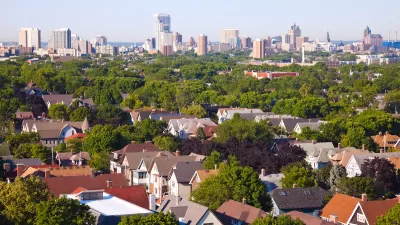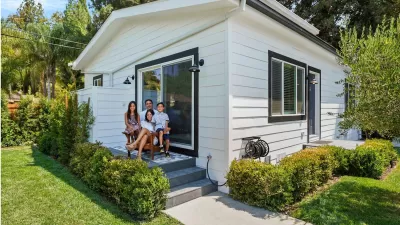Homeowners in the state are eagerly taking advantage of new laws allowing them to build additional housing units, making a small but significant impact on the housing supply.

The liberalization of laws surrounding the construction of accessory dwelling units (ADUs), also known as granny flats, is starting to make a significant dent in California’s housing crisis. While far from a panacea, the flurry of permits issued for ADUs signal that homeowners across the state are eager to take advantage of the opportunity to build an extra housing unit on their property.
As Erica Werner explains in The Washington Post, “More than 23,000 ADU permits were issued in California last year, compared with fewer than 5,000 in 2017 — which was around when ADU permitting began to take off thanks to legislative and regulatory changes in the state.” Los Angeles issued 7,160 of those permits, while only issuing 1,387 permits for single-family homes in the same time period.
Despite the high cost of ADU construction—the average unit runs roughly $300,000—“a study from the NYU Furman Center found that ADUs are being built not in the wealthiest neighborhoods, but more often in low- to middle-income areas, and often in places with relatively good access to jobs.” According to study author Christopher Elmendorf, “‘That’s consistent with the theory that this is a viable form of development in places that you may not’ otherwise be able to easily build.” David Garcia, policy director for the Terner Center for Housing Innovation at the University of California at Berkeley, says the speed at which Californians are applying for ADU permits signals “a pent-up demand from homeowners to want to do more with their land.”
FULL STORY: ‘Granny flats’ play surprising role in easing California’s housing woes

Planetizen Federal Action Tracker
A weekly monitor of how Trump’s orders and actions are impacting planners and planning in America.

Chicago’s Ghost Rails
Just beneath the surface of the modern city lie the remnants of its expansive early 20th-century streetcar system.

San Antonio and Austin are Fusing Into one Massive Megaregion
The region spanning the two central Texas cities is growing fast, posing challenges for local infrastructure and water supplies.

Since Zion's Shuttles Went Electric “The Smog is Gone”
Visitors to Zion National Park can enjoy the canyon via the nation’s first fully electric park shuttle system.

Trump Distributing DOT Safety Funds at 1/10 Rate of Biden
Funds for Safe Streets and other transportation safety and equity programs are being held up by administrative reviews and conflicts with the Trump administration’s priorities.

German Cities Subsidize Taxis for Women Amid Wave of Violence
Free or low-cost taxi rides can help women navigate cities more safely, but critics say the programs don't address the root causes of violence against women.
Urban Design for Planners 1: Software Tools
This six-course series explores essential urban design concepts using open source software and equips planners with the tools they need to participate fully in the urban design process.
Planning for Universal Design
Learn the tools for implementing Universal Design in planning regulations.
planning NEXT
Appalachian Highlands Housing Partners
Mpact (founded as Rail~Volution)
City of Camden Redevelopment Agency
City of Astoria
City of Portland
City of Laramie





























